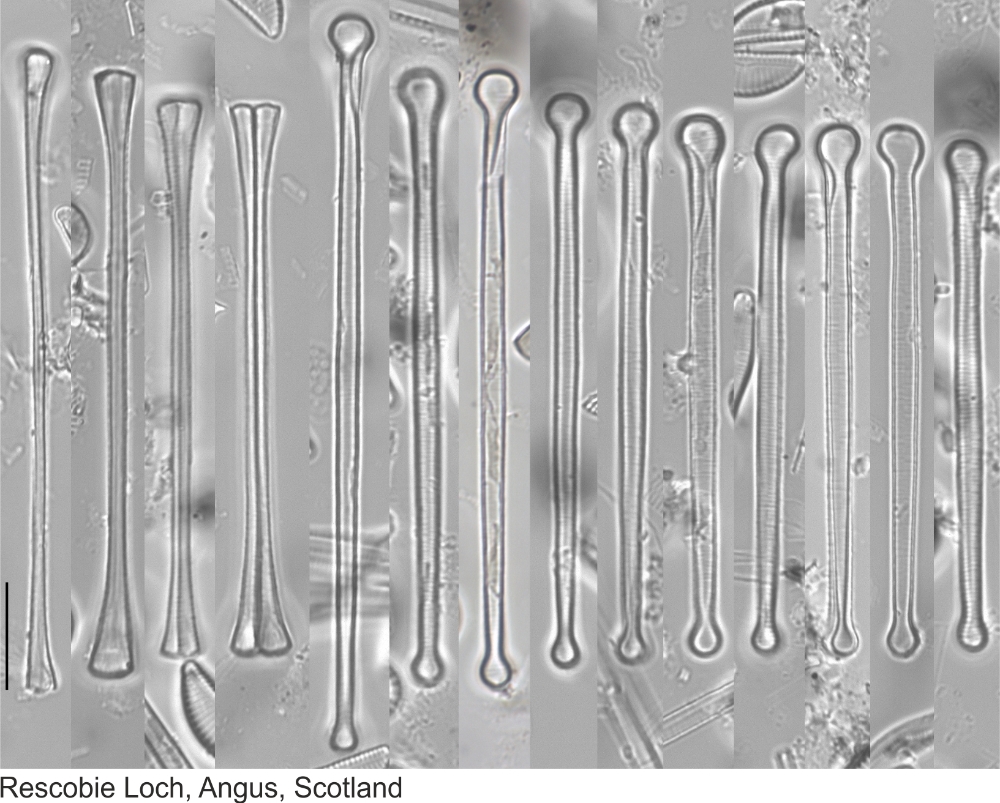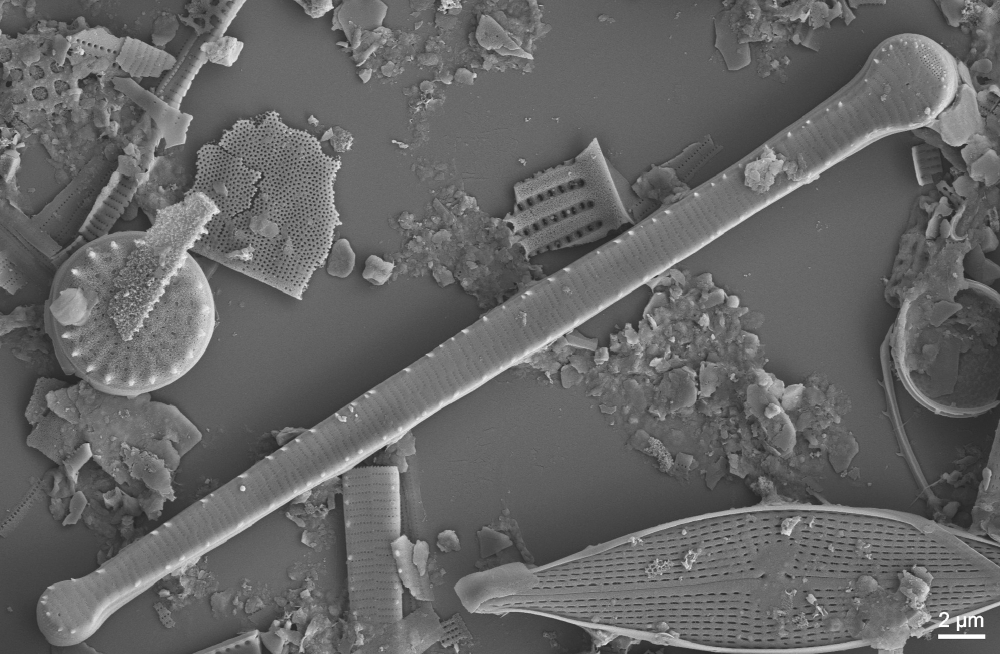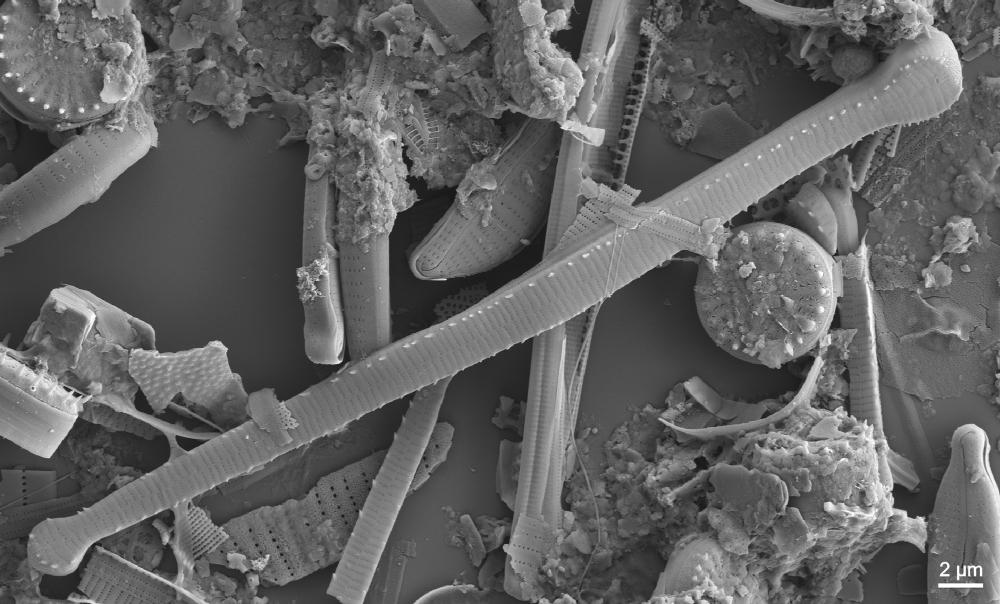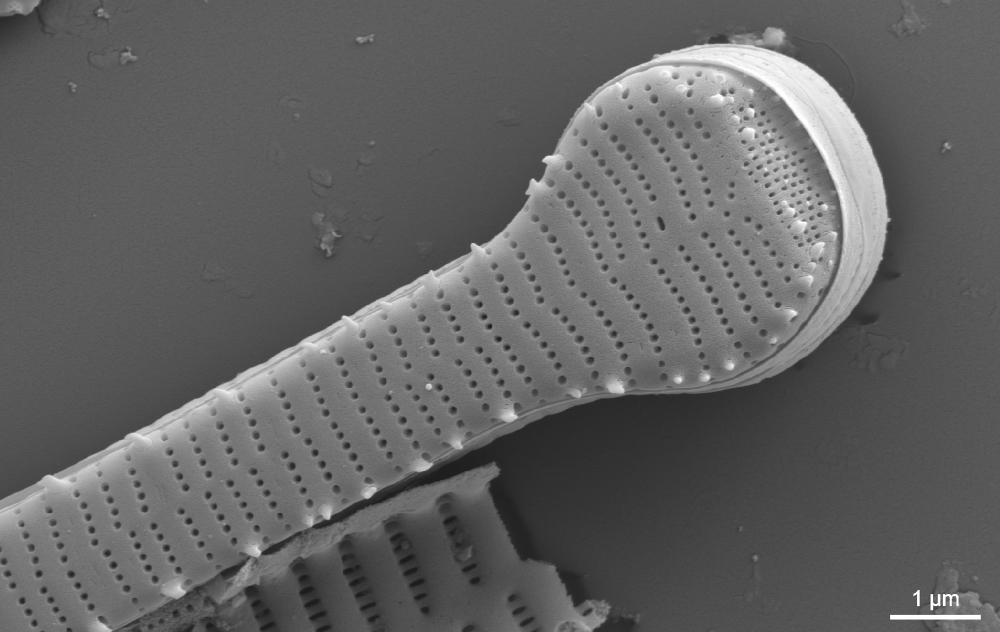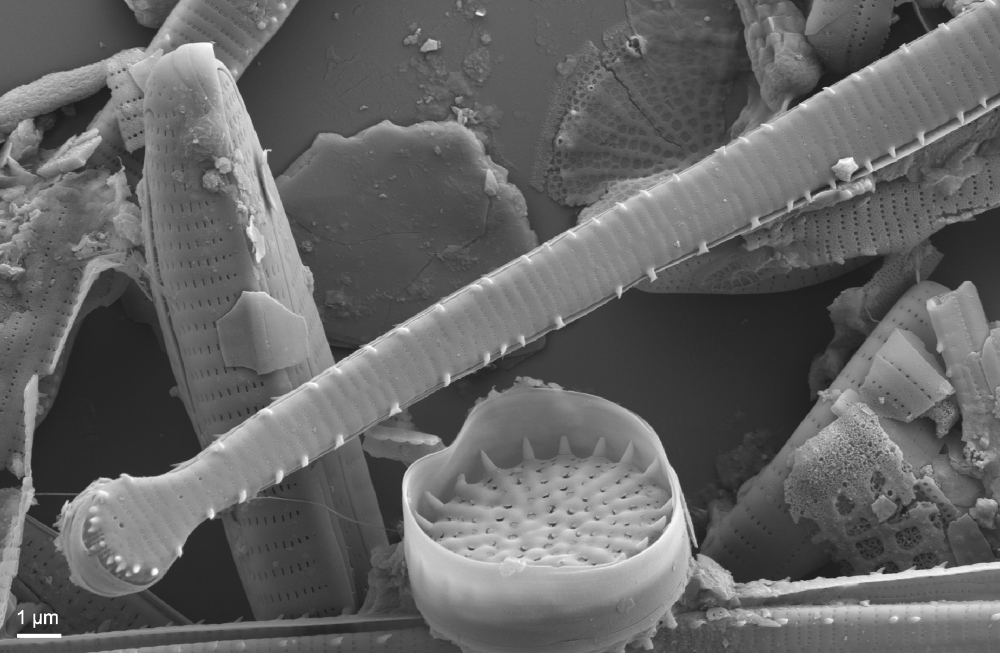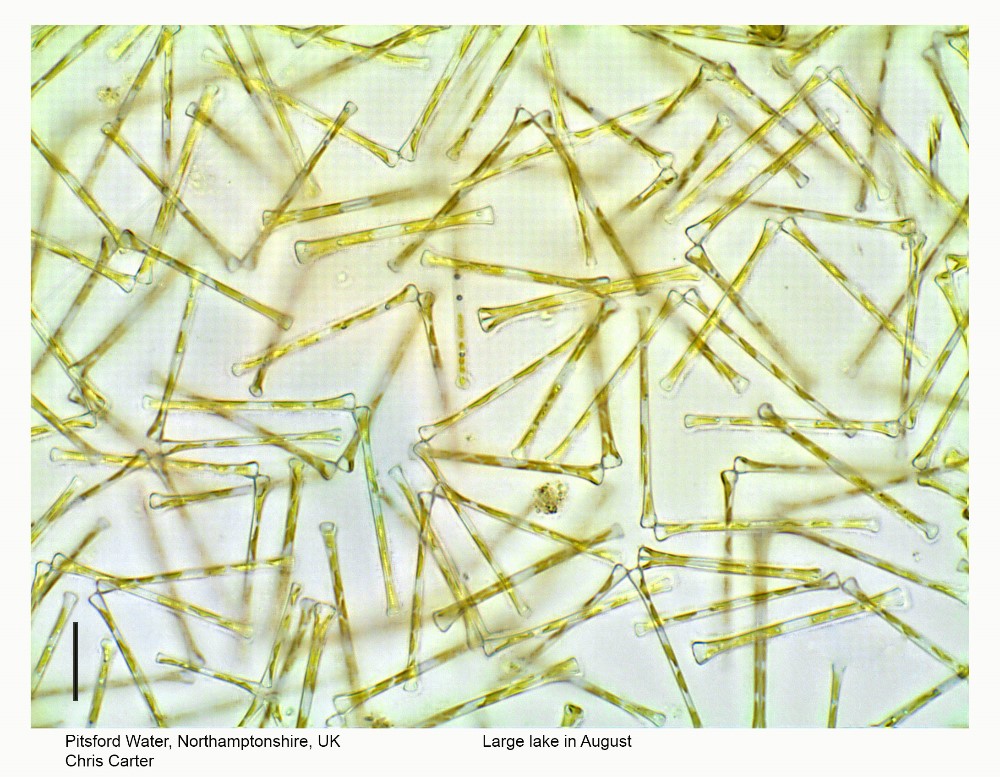Asterionella formosa A.H. Hassall; 1850; 10
Key references
Krammer K., Lange-Bertalot H. 1991. Süßwasserflora Mitteleuropas. Bacillariophyceae. 3. Teil. Centrales, Fragilariaceae, Eunotiaceae. Eds Ettl H., Gerloff J., Heynig H., Mollenhauer D., Gustav Fischer Verlag, Stuttgart. 576 pp
Pappas J.I., Stoermer E.F. 2003. Morphometric comparison of the neotype of Asterionella formosa Hassall (Heterokontophyta, Bacillariophyceae) with Asterionella edlundii sp. nov. from Lake Hovsgol, Mongolia. Diatom. 19: 55-65.
Sivarajah B., Rühland K.M., Labaj A.L., Paterson A.M., Smol J.P. 2016. Why is the relative abundance of Asterionella formosa increasing in a Boreal Shield lake as nutrient levels decline?. Journal of Paleolimnology. 55: 357–367.
Morphology
Size
Length (30)-40-80-(160) µm, width 1.3-6 µm (central European populations).
Shape
Cells linear and bilobate in valve view, with a larger, spatulate 'head pole' and a smaller spatulate 'foot pole'. Valves taper slightly near the 'foot pole'. In girdle view cells expand towards both ends of the valve. Cells are joined at the 'foot pole' to form stellate colonies.
Symmetry
Heteropolar, bilaterally symmetrical.
Striae
Striae uniseriate and parallel, 24-28 /10µm.
Axial area
Very narrow and linear.
Other features
Apical pore fields and rimoportulae present at the 'head' and 'foot pole'.
Small spines can be present along the valve margins.
Cells have several elongate chloroplasts.
Length (30)-40-80-(160) µm, width 1.3-6 µm (central European populations).
Shape
Cells linear and bilobate in valve view, with a larger, spatulate 'head pole' and a smaller spatulate 'foot pole'. Valves taper slightly near the 'foot pole'. In girdle view cells expand towards both ends of the valve. Cells are joined at the 'foot pole' to form stellate colonies.
Symmetry
Heteropolar, bilaterally symmetrical.
Striae
Striae uniseriate and parallel, 24-28 /10µm.
Axial area
Very narrow and linear.
Other features
Apical pore fields and rimoportulae present at the 'head' and 'foot pole'.
Small spines can be present along the valve margins.
Cells have several elongate chloroplasts.
Literature
References are given in chronological order.
Reference |
Citation |
|---|---|
| Hassall A.H. 1850. The Diatomaceae in the Water Supplied to the inhabitants of London and the suburban districts. A microscopic Examination of the water. Samuel Highley, London. 60; 6 pls. | Taxonomy; Illustrations; Description; Morphology |
| Jaworski G.H.M, Wiseman S.W., Reynolds C.S. 1988. Variability in sinking rate of the freshwater diatom Asterionella formosa: the influence of colony morphology. British Phycological Journal. 23: 167–176. | Ecology |
| Round F.E., Crawford R.M., Mann D.G. 1990. The Diatoms. Biology & Morphology of the Genera. Cambridge University Press, Cambridge. 747 pp | Illustrations; Morphology |
| Krammer K., Lange-Bertalot H. 1991. Süßwasserflora Mitteleuropas. Bacillariophyceae. 3. Teil. Centrales, Fragilariaceae, Eunotiaceae. Eds Ettl H., Gerloff J., Heynig H., Mollenhauer D., Gustav Fischer Verlag, Stuttgart. 576 pp | Morphology; Illustrations; |
| Bertrand C., Fayolle S., Franquet E., Cazaubon A . 2003. Responses of the planktonic diatom Asterionella formosa Hassall to abiotic environmental factors in a reservoir complex (south-eastern France). Hydrobiologia. 501: 45–58. | Ecology |
| Pappas J.I., Stoermer E.F. 2003. Morphometric comparison of the neotype of Asterionella formosa Hassall (Heterokontophyta, Bacillariophyceae) with Asterionella edlundii sp. nov. from Lake Hovsgol, Mongolia. Diatom. 19: 55-65. | Morphology; Type Illustration; |
| Saros J.E., Michel T.J., Interlandi S.J., Wolfe A.P. 2005. Resource requirements of Asterionella formosa and Fragilaria crotonensis in oligotrophic alpine lakes: implications for recent phytoplankton community reorganizations. Canadian Journal of Fisheries and Aquatic Sciences. 62: 1681–1689. | Ecology |
| Sivarajah B., Rühland K.M., Labaj A.L., Paterson A.M., Smol J.P. 2016. Why is the relative abundance of Asterionella formosa increasing in a Boreal Shield lake as nutrient levels decline?. Journal of Paleolimnology. 55: 357–367. | Ecology; |
This page should be cited as:
Jüttner I., Kelly M. Asterionella formosa A.H. Hassall; 1850; 10. In: Jüttner I., Carter C., Cox E.J., Ector L., Jones V., Kelly M.G., Kennedy B., Mann D.G., Turner J. A., Van de Vijver B., Wetzel C.E., Williams D.M..
Freshwater Diatom Flora of Britain and Ireland. Amgueddfa Cymru - National Museum Wales. Available online at https://naturalhistory.museumwales.ac.uk/diatoms/browsespecies.php?-recid=4473. [Accessed:
].
Record last modified: 27/12/2020


